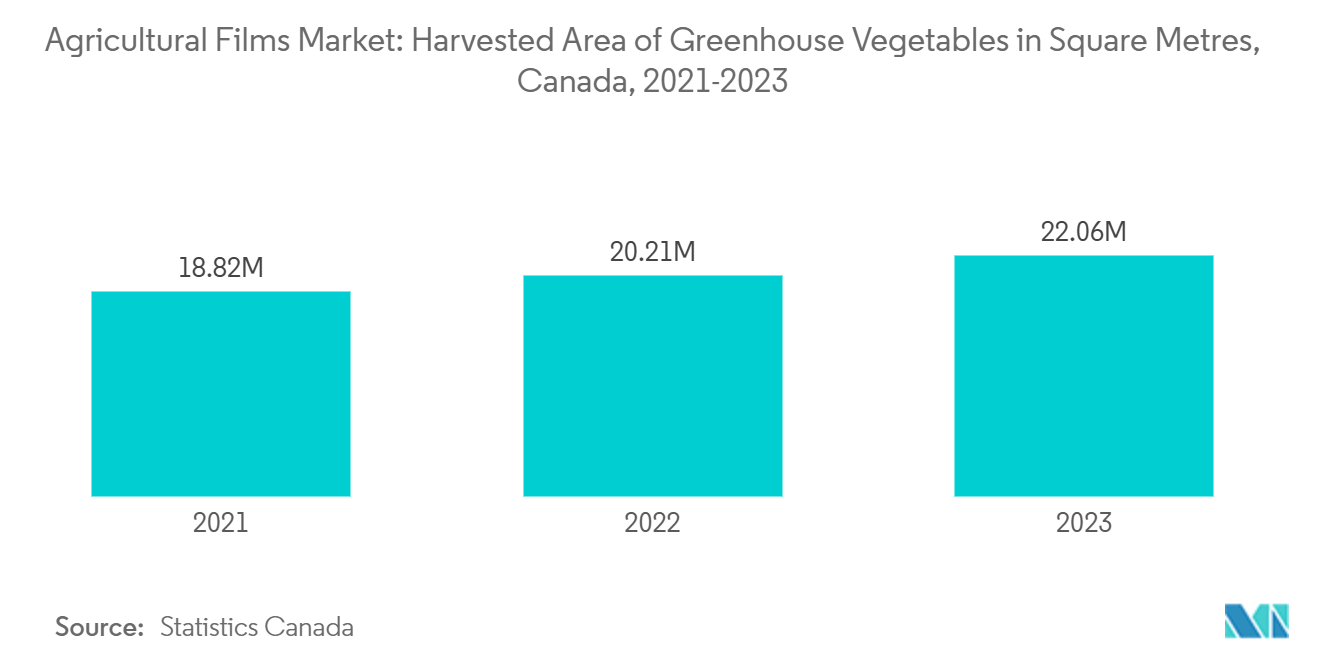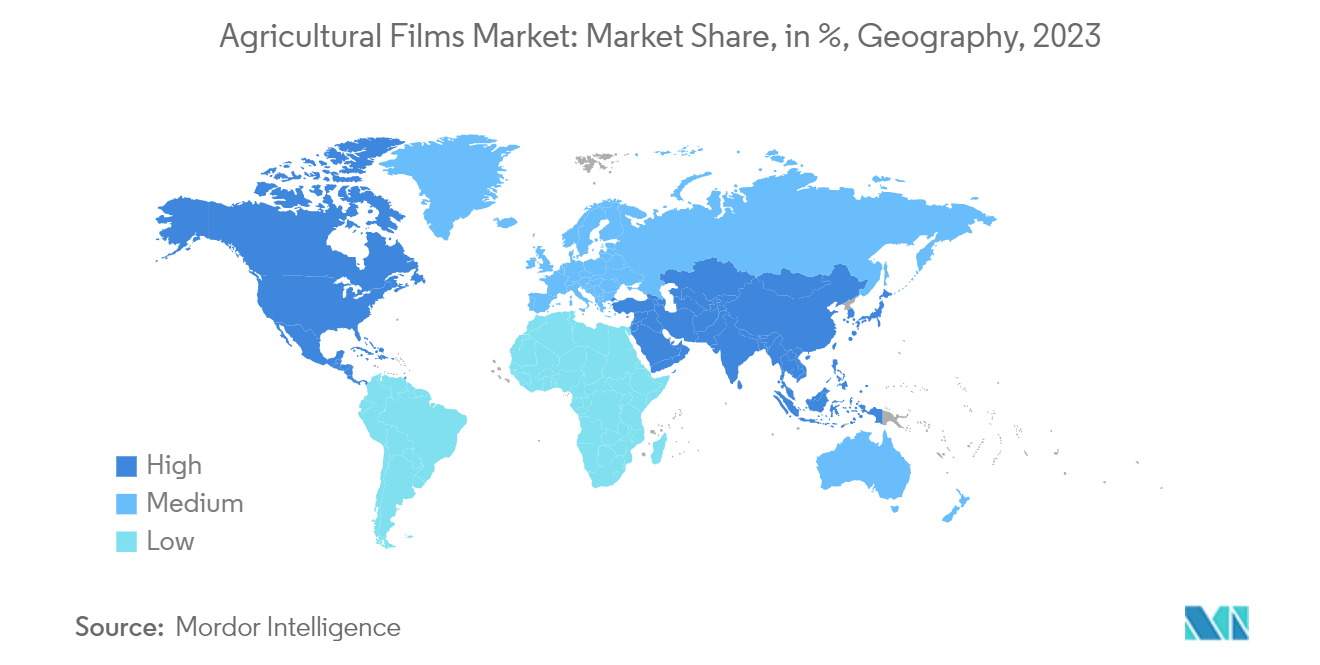Market Trends of Agriculture Films Industry
Greenhouse Applications Dominate the Market
Greenhouse films are gaining popularity among growers due to their ability to increase crop yields across all seasons. The higher production capacity of greenhouses compared to traditional farming methods, coupled with the rising food demand from population growth and climate change challenges, is expected to drive the growth of this segment. Greenhouse environments provide a controlled setting for crop cultivation, potentially enhancing plant genetics and promoting the growth of healthier varieties. Polycarbonate-based clear plastic films used in greenhouses offer superior temperature regulation and insulation compared to glass structures. These factors, combined with the cost-effectiveness of greenhouse films, are likely to fuel demand in this segment.
The growing global population and increasing food security concerns are driving the adoption of protected agriculture. This method extends crop growing seasons and increases yields, consequently boosting the demand for agricultural plastics. These materials are crucial for securing and significantly increasing output per hectare while enhancing crop quality. Agricultural films help reduce crop spoilage risks associated with weather, pests, and weeds, improving overall crop quality throughout the lifecycle, particularly in greenhouses. Polyethylene is a commonly used material for agricultural films, protecting crops and improving yields in greenhouses and tunnels.
In addition, several countries have expanded greenhouse production to enhance self-sufficiency, particularly in the GCC region. This area has seen the development of numerous greenhouse facilities, leading to increased production. For example, according to the Department of Agriculture, Qatar's greenhouse production in 2023 covered 666.4 hectares and yielded 67,263.6 metric tons. Similarly, the Ministry of Agriculture of the Russian Federation reported that greenhouse vegetable production in Russia reached a record 1.58 million tons in 2023, across 3.28 thousand hectares of greenhouse space. The primary crops included tomatoes, cucumbers, eggplants, bell peppers, greens, and lettuce. This growth in fruit and vegetable production through greenhouses is driving investments in the sector, consequently increasing the demand for agricultural films.
Manufacturers are incorporating various additives into agricultural films to enhance their performance and longevity. These additives include agrochemical resistance agents, ultraviolet (UV) absorbers, and anti-fogging compounds, which improve the durability and efficacy of greenhouse films. The development of advanced agricultural films using technologies such as nanotechnology and ultra-thermic materials is expected to drive demand for these products in greenhouse applications during the forecast period.

Asia-Pacific is the Largest Market
The Asia-Pacific region accounts for nearly half of the global greenhouse vegetable cultivation area. Key factors driving the agricultural film market in the region include extensive greenhouse vegetable cultivation, growing emphasis on high-value and export-oriented fruit and vegetable production, and a thriving agriculture industry. Rising environmental awareness has led consumers to prefer biodegradable films, further stimulating market growth. Increasing productivity has become crucial due to the continuous decline in per capita farmland availability. According to the Food and Agriculture Organization's (FAO) Statistical Yearbook World Food and Agriculture 2023, Vietnam's per capita agricultural land availability in 2023 was approximately 0.3 hectares per person, one of the world's lowest rates. This reflects the country's high population density and limited land resources. The need for high-yielding crops to address farmland scarcity without compromising production volumes may be met through greenhouse farming, potentially increasing the use of agricultural films in this sector.
Mulching remains a traditional and widely used method in Indian agriculture. However, a 2022 research study by NGO Toxic Links and Manipal Academy of Higher Education revealed a significant microplastic contamination problem in India's agricultural fields. This issue stems from the extensive use of mulch films for crop protection. These films, used in fields or as greenhouse covers, degrade and release plastic particles smaller than 5 millimeters in diameter. These microplastics can penetrate deep into the soil, potentially affecting crops and, subsequently, human health. These concerns are projected to drive the adoption of biodegradable and compostable films in India.
Silage production is gaining traction in various Asian countries as an economical alternative to traditional forage. Local authorities are actively promoting silage production to provide high-quality forage for cattle and enhance livestock production. For instance, in 2021, the Economic Office of Pho Yen collaborated with the Vietnam National Seed Joint Stock Company to implement a corn silage production and consumption linkage model in the province. These initiatives are boosting silage production in the region, which is anticipated to drive the demand for agricultural films in this segment. Additionally, a 2020 study by Nanyang Technological University in Singapore found that synthetic polymers such as polycaprolactone, polyethylene, polyvinyl alcohol, and acrylate-based polymers can be used as mulch to cover soil and prevent moisture loss. The increasing research and development activities in this area are further contributing to the growth of the agricultural film market.
Moreover, Farmers in Asia-Pacific, especially in Australia, are increasingly adopting protected agricultural practices to improve crop productivity and quality. In 2022, the Cooperative Research Centre conducted a project titled 'Smart Glass film impacts on energy use and Productivity in greenhouse lettuce'. This study evaluated the performance of energy-saving smart glass and light-shifting LLEAF film in greenhouse lettuce production. Crop scientists at Western Sydney University (WSU) collaborated with Hort Innovation on this project, supported by industry partners LLEAF Pty Ltd and Rijk Zwaan. Such research studies on agriculture films are anticipated to positively impact the market.


